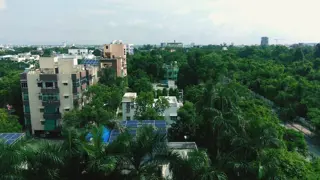Surat’s Sustainable Revolution: Leading India’s Eco-Friendly Movement
 Surat has become a shining example of sustainable urban development in India, merging cutting-edge technology with ecological responsibility. This blog delves into how LEED certifications, solar energy innovation, and advanced water management systems make Surat a global model for green real estate.
Surat has become a shining example of sustainable urban development in India, merging cutting-edge technology with ecological responsibility. This blog delves into how LEED certifications, solar energy innovation, and advanced water management systems make Surat a global model for green real estate.
LEED and IGBC Certifications: Setting New Standards
Surat earned LEED Platinum certification for cities—the first in India—through rigorous green building codes and strategic urban planning. Key achievements include:
- Energy Efficiency: Office complexes like the 7.1 million sq.ft. Surat Diamond Bourse use 50% less energy than other industries. They use dual-sided solar panels and waterless robotic cleaning systems.
- Green Infrastructure: Biodiversity parks with native flora improve air quality and create urban recreational spaces.
- Circular Economy: Waste-to-energy projects and compost initiatives divert organic waste, fueling circular resource management.
The city’s IGBC Platinum-rated developments emphasize harmony with nature and renewable energy integration, exemplified by India’s largest floating solar rooftop installation at the Diamond Bourse.
Solar Energy Adoption: Driving Innovation
Surat’s renewable energy strategy drives innovation in commercial real estate:
- Commercial-Scale Solar: The Surat Diamond Bourse employs 545 tonnes of solar infrastructure, generating electricity from both panel sides to maximize output.
- Smart Grid Systems: IoT-enabled monitoring optimizes energy distribution, supporting large-scale solar deployments across residential and industrial zones.
- Renewable Energy Mix: 34% of the city’s energy comes from renewable sources, aligning with global climate goals and reducing reliance on fossil fuels.
Water Conservation Technologies: Innovating for Resilience
Surat’s approach to water management combines traditional knowledge with smart technologies:
- Digital Water Management: IoT sensors track quality and consumption in real-time, preventing waste and leaks in both residential and commercial sectors.
- Sewage Treatment for Revenue: All wastewater is treated and repurposed, covering operational costs while protecting water bodies.
- Stormwater Harvesting: Integrated into urban design, these systems mitigate flooding risks and enhance groundwater resources.
Eco-Friendly Niches and Future Developments
Surat’s sustainable real estate opportunities span multiple sectors:
- Commercial Spaces: Office complexes prioritize natural daylight, rainwater harvesting, and energy-efficient HVAC systems.
- Industrial Zones: Solar-powered manufacturing hubs reduce carbon footprints while maintaining productivity.
- Smart Housing: LEED-certified residential projects integrate bike lanes, pedestrian zones, and green roofs to promote community well-being.
Conclusion Surat’s green building initiatives offer actionable insights for global cities: integrating renewable energy, adopting circular waste models, and prioritizing biodiversity. As India’s fastest-growing city, Surat proves that sustainability and urban expansion are not mutually exclusive—a blueprint for developers worldwide to replicate and refine.